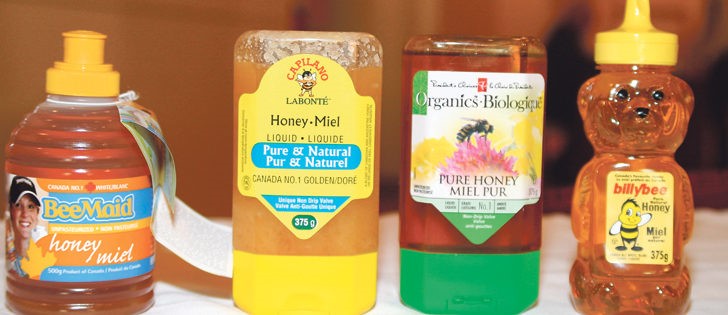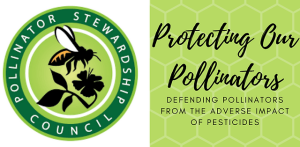
Imported honey would be required to say Grade No. 1 instead of Canada No. 1 to avoid confusion. Only one of these containers of honey — the BeeMaid on the left — is truly a product of Canada, even though all the labels say Canada No. 1. The Canadian Honey Council, along with provincial beekeepers, want consumers to choose domestic product over imports masquerading as Canadian honey.
Canada may be on the verge of changing its honey labelling rules.
Beekeepers have been calling on the government to clearly label honey as a product of Canada, and the feds may soon make the requested change, says an industry rep.
“What I’ve seen gazetted (in Ottawa) in the next change in labels, it looks like that’s been achieved,” said Guy Chartier, chief executive officer of Bee Maid Honey, a co-operative owned by beekeepers.
“If you’re importing honey to Canada … you will no longer be able to say it is Canada No. 1. You’re going to have to say Grade No. 1.”
Honey is labelled by grade, such as Canada No. 1 white, which leaves the buyer with the impression that it’s a product of Canada.
In fact, it may contain mostly foreign honey and can still say Canada No. 1 on the front of bottle.
“If you look on the back of any honey container, you’ll see the ingredients list,” said Mark Friesen, president of the Manitoba Beekeepers Association.
“It (might) say, first of all, Chinese honey, Argentina honey and third of all, Canadian honey.”
Beekeepers say the grade label is confusing and is allowing questionable honey suppliers to gain market share in Canada.
Canada imported about $13.3 million of honey in 2011, mostly from places such as Brazil, Argentina and Australia.
It had jumped to $42.1 million by 2015, and a few unexpected countries had popped up on the import list, including Spain and Thailand.
Exports from Spain to Canada are strange because Europe imports more than 150,000 tones of honey a year. Thailand is also weird be-cause it’s a tiny player in the global honey market. However:
- The value of Spanish honey exports to Canada went from $42,000 in 2013 to $3.2 million in 2015.
- Thai imports were zero in 2013 and $2.6 million in 2015.
Many people in Canada’s honey industry believe the honey from Spain, Thailand, Ukraine and elsewhere actually originates from China. It’s the largest honey producer in the world and has a reputation for funnelling its honey through other countries to avoid a “made in China” label on the back of the bottle.
Chartier said the honey from Spain is especially dubious. It appeared in Canada about two years ago and was bought for $1.75 per pound.
The price was incredibly low because raw Canadian honey was selling for $2.20 per lb. at the time.
“They were coming in, packed in a glass jar and shipped from Spain, at $1.75,” Chartier said.
“Something didn’t add up.”
The Canadian Food Inspection Agency later recalled the Spanish honey because it contained a chemical used in Chinese honey production.
Despite the recall, the “Spanish” honey is still being sold at Canadian grocers.
Changing labelling rules might encourage more consumers to choose Canadian honey, but Jim Coneybeare, a beekeeper from Fergus, Ont., isn’t holding his breath.
The government has talked about changing honey labelling in the past and nothing has happened.
“I’m skeptical…. This (labeling issue has) been ongoing for 20 to 25 years,” said Coneybeare, a Canadian Honey Council director.
“We’ve laid out our arguments very clearly. It’s very misleading. Packers use it to their full advantage in selling honey that’s not Canadian…. I don’t know why Ottawa has been so slow in responding.”








